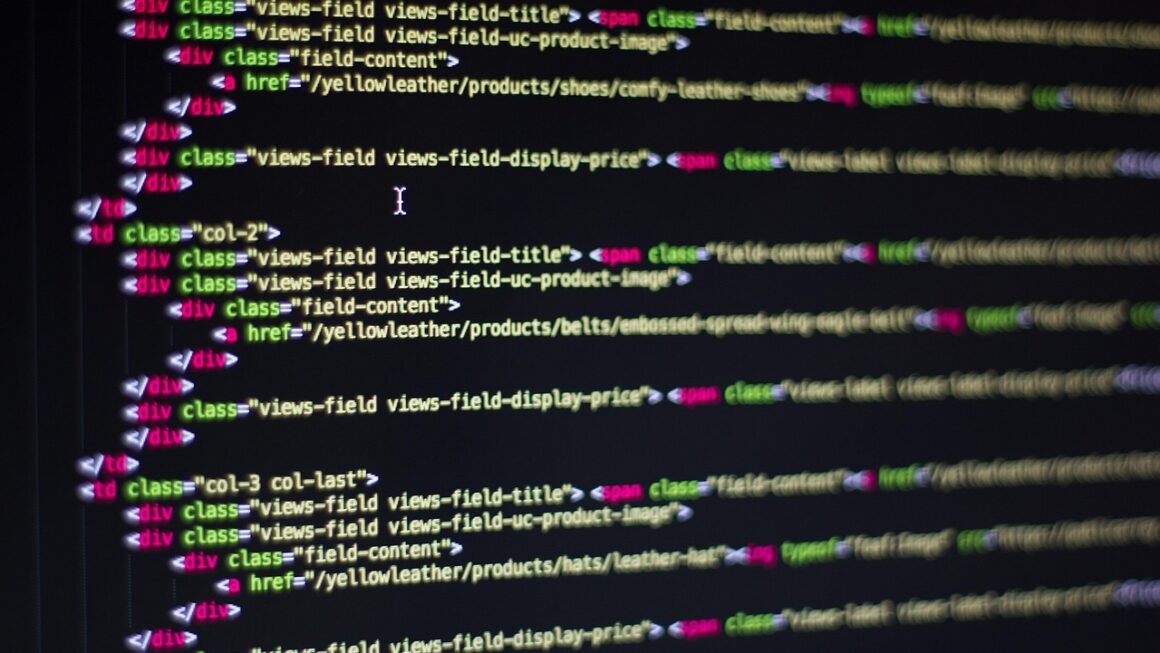AI is no longer a futuristic fantasy; it’s a present-day reality revolutionizing countless industries, and software engineering is no exception. From automating tedious tasks to enhancing code quality and fostering innovative solutions, Artificial Intelligence is rapidly becoming an indispensable tool for developers of all skill levels. This blog post will delve into the various ways AI is transforming software engineering, exploring practical applications, and providing actionable insights to help you leverage this powerful technology.
AI-Powered Code Generation and Completion
Intelligent Code Completion
AI-powered code completion tools are significantly boosting developer productivity. These tools, often integrated directly into IDEs, go beyond simple keyword suggestions. They analyze the context of your code, understand the project’s structure, and predict the most likely next lines of code, significantly reducing boilerplate and typing errors.
- Example: Consider using GitHub Copilot or Tabnine. These tools learn from vast amounts of publicly available code and can generate entire function blocks, unit tests, and even suggest solutions for common coding problems. They can understand complex logic and propose relevant code snippets, even when dealing with unfamiliar APIs.
Automated Code Generation
AI’s ability to generate code extends beyond simple completion. Tools are emerging that can automatically generate entire programs or modules based on high-level descriptions. This is particularly useful for repetitive tasks or generating code for specific platforms or architectures.
- Example: You can use tools like GPT-3 or Codex to generate code snippets from natural language descriptions. Imagine typing “Create a Python function to sort a list of integers in ascending order” and receiving a fully functional code block. While the generated code may require some refinement, it significantly speeds up the initial development process.
- Data: According to a recent study by GitHub, developers using Copilot completed tasks 55% faster and reported a 26% reduction in repetitive coding work.
AI for Code Testing and Debugging
Automated Bug Detection
AI algorithms are being trained to identify potential bugs and vulnerabilities in code. These tools analyze code for common error patterns, security flaws, and performance bottlenecks, often before the code is even executed.
- Example: Static analysis tools enhanced with AI can detect potential null pointer exceptions, memory leaks, and race conditions with higher accuracy than traditional static analysis methods. They can learn from past bug reports and identify similar patterns in new code.
- Benefit: This proactive approach to bug detection can significantly reduce the time and cost associated with debugging and testing, leading to more stable and reliable software.
Intelligent Test Case Generation
Creating comprehensive test suites can be a time-consuming and challenging task. AI is automating this process by generating test cases that cover a wide range of scenarios, including edge cases and boundary conditions.
- Example: AI-powered test generation tools can analyze code and automatically generate unit tests, integration tests, and even UI tests. These tools use techniques like symbolic execution and fuzzing to identify potential vulnerabilities and ensure comprehensive test coverage. They can automatically create test data and assertions based on the code’s expected behavior.
- Actionable Takeaway: Integrate AI-powered testing tools into your CI/CD pipeline to automatically generate and run tests with every code change, ensuring continuous quality assurance.
AI in Software Project Management
Predictive Analytics for Project Risks
AI can analyze historical project data to predict potential risks and delays. By identifying patterns and trends, AI algorithms can provide insights into resource allocation, task dependencies, and potential bottlenecks.
- Example: AI models can predict the likelihood of project delays based on factors such as team size, task complexity, and resource availability. This allows project managers to proactively address potential issues and mitigate risks before they impact the project timeline.
- Statistic: Research shows that projects leveraging AI-powered risk management are 30% more likely to be completed on time and within budget.
Enhanced Resource Allocation
Optimizing resource allocation is crucial for project success. AI can analyze project requirements, team skills, and resource availability to determine the most efficient way to allocate resources to tasks.
- Example: AI algorithms can identify skill gaps within a team and recommend training programs or additional resources to address those gaps. They can also optimize task assignments based on individual strengths and expertise, leading to improved productivity and job satisfaction.
- Tip: Use project management software with integrated AI features to gain insights into resource utilization and identify opportunities for improvement.
AI-Driven Code Review and Refactoring
Automated Code Style Enforcement
Maintaining consistent code style is essential for code maintainability and collaboration. AI can automate code style enforcement by analyzing code and identifying deviations from established coding standards.
- Example: AI-powered linters can automatically detect code style violations, such as inconsistent indentation, naming conventions, and comment formatting. They can even automatically correct these violations, ensuring that code adheres to the project’s coding standards.
- Benefit: This automation eliminates the need for manual code style reviews, freeing up developers’ time for more critical tasks.
Smart Refactoring Suggestions
AI can analyze code and suggest refactoring opportunities to improve code quality, performance, and maintainability. These suggestions can range from simple code simplifications to more complex architectural changes.
- Example: AI algorithms can identify duplicated code blocks and suggest refactoring them into reusable functions or classes. They can also identify performance bottlenecks and suggest optimizations, such as caching frequently accessed data or using more efficient algorithms.
- Practical Example: Tools like SonarQube use AI to provide refactoring suggestions based on code complexity, maintainability, and security vulnerabilities.
Ethical Considerations and Challenges
Bias in AI Models
AI models are trained on data, and if that data is biased, the resulting models will also be biased. This can lead to unfair or discriminatory outcomes in software applications.
- Example: An AI-powered hiring tool trained on historical hiring data that predominantly features male candidates may perpetuate gender bias in the hiring process.
- Actionable Takeaway: Carefully audit the data used to train AI models and implement techniques to mitigate bias, such as data augmentation and adversarial training.
Explainability and Transparency
Understanding how AI models arrive at their decisions is crucial for building trust and ensuring accountability. However, many AI models are complex and difficult to interpret, making it challenging to understand their reasoning.
- Challenge: Developers need to prioritize explainable AI (XAI) techniques to make AI models more transparent and understandable. This includes using simpler models, providing explanations for predictions, and allowing users to interact with the model’s decision-making process.
Job Displacement Concerns
The increasing automation of software engineering tasks raises concerns about potential job displacement. While AI is likely to automate some tasks, it is also creating new opportunities for developers with expertise in AI and machine learning.
- Perspective: Developers need to adapt to this changing landscape by acquiring new skills and focusing on higher-level tasks that require creativity, problem-solving, and critical thinking. AI should be viewed as a tool to augment human capabilities, not replace them entirely.
Conclusion
AI is transforming software engineering at an unprecedented pace, offering opportunities to improve productivity, enhance code quality, and accelerate innovation. By embracing AI-powered tools and techniques, software engineers can unlock new levels of efficiency and effectiveness. While ethical considerations and challenges exist, a proactive and responsible approach will ensure that AI benefits both developers and society as a whole. The future of software engineering is intertwined with AI, and those who embrace this powerful technology will be best positioned for success.




